The Artist's Almanac Autumn 2025
The necessity of creative friendships.
This is an edition of The Artist's Almanac: a quarterly guide for outsider artists in developing creative practice through all seasons of making—even in mud.
The almanac tracks the movement of celestial bodies along with the weather of my actual creative practice, offering what works now and composting what doesn't.
Do not wait for the ideal conditions to create. Create the most ideal conditions you can with what’s at hand.
Note: The Artist’s Almanac will be truncated in email. View on the app or in a web browser to view in full. The Almanac is best viewed on a larger screen.
Map of the Almanac
Don’t be overwhelmed. Wander where you like! Just take what you need for the coming season. Friendship is what I am in need of, so I have prepared here a few reflections on creative alienation; a condition which I have endured for several seasons.
I am planning an escape from my hermetic habits. They are so enticing even though I am miserable, as outside becomes more unappealing. But making friends was once something I was very good at, and I’d like to be again.
This almanac is a kind of map around this problem, and some action steps I’ve devised to find my way out of the maze of myself.
I hope these reflections offer you a guide if you need it.
A. Inner work/Personal Reflection
➰To You Who Create All Alone → Reflections on creative isolation and the benefits of relational creative work.
➰ Make Time for Folly → Play without concept or justification!
B. Sharing & Collaboration
➰ On Sharing Work → Practical considerations on exposure
➰ Kahlil Gibran on Friendship → Wisdom for friendship
➰ The Art of Quarreling → How constructive disagreements strengthen friendships
➰ Creative Friendships to Model→ Carrington & Varo, Duchamp & Cornell, Smith & Mapplethorpe
C. Conceptual Tools
➰ The Artist’s Vocabulary → How does language shape your practice?
➰ Autumn Reading List → Texts exploring creative friendships
➰ To Do → Actionable steps to build creative relationships
➰ Support the Artist’s Almanac!→ Preorder my self published chapbook and receive an ad in the Winter 2025 Almanac.
“Our friendships hurry to short and poor conclusions, because we have made them a texture of wine and dreams, instead of the tough fibre of the human heart.”
- Ralph Waldo Emerson ‘Friendship’
To You Who Create All Alone:
Our friends see us before we can see ourselves.
It would be logical to invite friends into our creative orbit. Why not share this aspect of ourselves out in the open with the people who love us most?
It is common among artists to hide creative life away from view of those who see them most clearly. Artists tend to allow their creative work to suffer in isolation, This is an impoverished way of working.
This concealment is born of perfectionism, fears of embarrassment, or inadequacy. To call yourself an artist when you don't like anything you make is a necessary humiliation ritual. No skill or credential is needed to justify your title. Allowing yourself to play the fool is a good first step to take.
Forcing creative life into secrecy stifles the creative spirit.
Without fresh air and feedback from others close to us, art will backslide into solipsism. It happens in such a way that feels involuntary. There are necessary seasons of retreat, but permanent exile should be avoided.
Allowing ourselves to be seen is a creative act—arguably more so than carefully controlling your image. It is easy in the world today to be perfectly curated—there are machines for that. If you are content to become one with them, that is up to you.
When you make space for your humanity to shine through in your work, you create space to be recognized by other humans.
Presenting yourself as a work in progress is insurance against automation. There is so much anxiety among creatives about automation and artificial intelligence, but the raw, unmediated human spirit can never be replicated.
When you allow yourself to create from such a place, the art you bring forth may unearth some hidden aspect of yourself that you yourself may not recognize. It might at first appear childlike, but why not give yourself grace to take those first few wobbly steps?
You will fall, but good friends admire all efforts on our journey of becoming. And in your falling, you will meet others on the ground with you, doing the real work.
Make Time for Folly this Fall
Consider throwing a party!
Your friends will appreciate an opportunity to play and forget about the horror and drudgery of life. This I am certain of.
In April I threw an art making party. I invited my friends to bring their figurines, Knick knacks, and mementos. We created little rooms together in a dollhouse and took photos.
At this point, I had been creating a little world of my own in my dollhouse project for a year. Until I threw this party, this project was mostly shared with Subscribers of my newsletter. I was comfortable keeping this part of myself to strangers on the internet, but this distance muddied the real purpose of my project.
In private, I felt pressured to create complex conceptual frameworks to justify my work. I felt insecure about keeping a dollhouse, and I naturally wanted to be taken seriously as an artist.
But why is play not taken seriously? Children discover truths in playing every day. Play is our most natural way of navigating challenges and finding new solutions.
Inviting my real friends into this project was clarifying. There was no need for me to complicate it as much as I had. I was simply a person with a complicated relationship to home, testing out new ways to explore this experience I’ve endured in life creatively.
Waiting for my friends to show up, I set out little trinkets and figurines on a table. I felt nervous about showing this side of myself before everyone arrived. As soon as my guests started rolling in, people began making rooms together and making up stories about the arrangements they made.
I heard my adult friends laughing and speaking from their imaginations, rather than stilted conversations constrained to current events and the news cycle.
Ever since, my guests have thanked me for throwing it. I now know I am not so alone in my need to nurture the inner child; everyone has an inner child that needs time to come out and see the world as fresh and new.
On Confidence & Sharing Work
Sharing the world with other people requires creativity. Creativity requires other people. There is no other choice but to find a friend if we wish to thrive. And, if we want to be artists, we have to share our work with them.
This will be awkward at first. You may not have made a thing and showed it to anyone else since you were small. Or, you may have tried and now have memories of being burned while sharing your work. In any case, confidence is something the artist will have to wrestle with. It may take several seasons to develop, but it will. All you need to get started is one good friend!
It is not enough to create worlds of our own. We must allow ourselves to be seen in them. Why not start today?
Sharing is best when it can be done in person, but if you need to dip your toes in the water, feel free to share something in my Substack chat. You’ll just need to download the app or join from your desktop to join in.
If you decide to share, share an image or fragment of text to show your project. Include this information in your post:
Some context on the work you’re sharing
What you’re looking for feedback on
What is your current feeling attached to the work? Excited? Frustrated? Stuck?
Rules for the chat:
Only provide critique on aspects of the work the poster asked for feedback on. Example, if they expressed frustration with color, don’t provide a critique on composition.
If you post, be sure to engage thoughtfully with at least one other person.
Make sure you respond to at least one other person!
Kahlil Gibran On Friendship
The Prophet is a book that should be included in every library. This collection of poetic essays shares wisdom on every domain of life: love, children, home, work, and of course, friendship.
What is friendship? Its purpose in our lives are not as carefully considered as the selection of spouses or the kinds of work we choose to pursue. Friendship is a domain of life that deserves much more consideration.
In this poetical work, Gibran asks: What do you seek in your friendships? And what do your friends seek in you?
And a youth said, Speak to us of Friendship.
And he answered, saying:
Your friend is your needs answered.
He is your field which you sow with love and reap with thanksgiving.
And he is your board and your fireside.
For you come to him with your hunger, and you seek him for peace.When your friend speaks his mind you fear not the “nay” in your own mind, nor do you withhold the “ay.”
And when he is silent your heart ceases not to listen to his heart;
For without words, in friendship, all thoughts, all desires, all expectations are born and shared, with joy that is unacclaimed.When you part from your friend, you grieve not;
For that which you love most in him may be clearer in his absence, as the mountain to the climber is clearer from the plain.And let there be no purpose in friendship save the deepening of the spirit.
For love that seeks aught but the disclosure of its own mystery is not love but a net cast forth: and only the unprofitable is caught.And let your best be for your friend.
If he must know the ebb of your tide, let him know its flood also.
For what is your friend that you should seek him with hours to kill?
Seek him always with hours to live.For it is his to fill your need but not your emptiness.
And in the sweetness of friendship let there be laughter, and sharing of pleasures.For in the dew of little things the heart finds its morning and is refreshed.
From The Prophet (Knopf, 1923). This poem is in the public domain.
Seek Out Friendships that Challenge You.
Quarreling is a lost art form.
It is so simple to avoid quarrels, so long as we choose to associate ourselves with people of the same algorithm. We seem to reserve quarrels for strangers and enemies, but it is an important activity in friendship as well.
You could choose your friends based on a few surface level qualities a computer chooses for you, but disagreement is inevitable even in superficial human relationships. There is no friction-free friendship. Why not choose the one who helps you grow?
It is boring to make friends with your reflection. Inviting opposing perspectives into our lives is far more interesting and creates more room foe discovery.
Are you willing to share the world with another? If so, you must be willing to admit your point of view is only one of many. It does no good for the soul to only seek out agreement. To find friendships that feed the soul, seek out the ones that challenge your world view. You may be relieved to let go of what you thought to be true.
Agreeableness leads to bland conversation. Contrariness for the sake of it is tiresome. Do not go out looking for a fight, but don’t avoid them either. Notice what incites discomfort in you, and when it inevitably arises, extend this as a fact to your friend with grace.
We need the right tools to quarrel well. In these times, we conflate all disagreement with betrayal, squandering all possibilities of new friendships when we don’t agree on the right words.
Welcoming others into our creative work inevitably welcomes misunderstanding. Complete understanding is not what we should seek, anyways, as complete understanding is impossible.
Instead of avoiding our differences, we might learn to recognize them as tough fibers of our human hearts. When there is space for disagreement, we make room to reveal what is usually hidden in the depths of ourselves.
When we share the fullness of ourselves and extend a little patience, time will produce sturdy cloth and more fulfilling connections.
At some point in this season, allow yourself to be misunderstood deliberately. View it as a creative opportunity!
Is Your Vocabulary Updated?
Many of the words in our arsenal are overused and/or selected carelessly.
The significance of words are subject to change over time. Overuse wears down their meaning. The artist should tend to their vocabulary as they would a garden, pruning and weeding as circumstances change. The words we use shape our practice. If not chosen intentionally, we will find ourselves trapped in dusty ideologies. The words we use shape the horizon of our creative possibilities.
Every word has an original meaning that has deviated from its original definition. It is helpful to review words frequently, to ensure we are speaking the same language as our friends.
Let’s review a quote from Wendell Berry to take a closer look the word “originality,” which is commonly cited as the goal post for creative work:
"Works of pride, by so-called creators, with their premium on originality, reduce the Creation to novelty—the faint surprises of minds incapable of wonder.
Pursuing originality, the would-be creator walks alone. In loneliness one assumes a responsibility for oneself that one cannot fulfill.
Novelty is a new kind of loneliness."
-Wendell Berry “Healing”
Can You Define “Originality”?
according to Webster’s Dictionary, it is defined as follows:
Orginality noun: 1. The quality or state of being original. 2. The power of originating or producing new thoughts, or uncommon combinations of thought; as originality of genius.
Artists fear being labeled derivative. The opposite of derivative is thought to be originality—but what does “originality” really mean—especially in the year 2025? Can anyone be truly original without acknowledging their tiny place in the whole of history?
Webster defines originality as the creation of new thoughts, but if we are to produce new thoughts, we must reference the history of thoughts that came before. There is no other way to produce a new thought other than to build upon what has already been built.
It is arrogant for anyone to believe themselves to be a truly independent genius. We think of the masters as “original,” but even Picasso’s most “original” paintings were made possible because of his exposure to African art, which was a tradition steeped in African culture for generations before Picasso named it “Cubism.”
The only true originality is born of the merging of minds, or combination of a pair of opposites once believed to be separate.
“Amateur”
An amateur is simply a beginner, but the word carries a derogatory connotation. It is currently defined by Webster’s dictionary as this:
Am`a`teur´ n.1.A person attached to a particular pursuit, study, or science as to music or painting; esp. one who cultivates any study or art, from taste or attachment, without pursuing it professionally.
The etymology of the word Amatuer is rooted in the Latin word Amare, meaning Love. The origins of this word highlight the passion of a maker and their love of the process, rather than an evaluation of the final result.
If something is poorly done, we often call it “amateurish,” which implies a job that is poorly done.
Is it really so bad to be “Amateur?” — A person who does what they love, regardless of the end product? So few pursue their passions so open heartedly, or even make things at all.
Being an amateur is a sacred path. You could produce nothing to avoid being one, but where is the beauty in that?
“Wonder”
wonder noun 1 a: a cause of astonishment or admiration : marvel
2. : the quality of exciting amazed admiration 3 a: rapt attention or astonishment at something awesomely mysterious or new to one's experience.
In the quote shared above, Berry detests the modern obsession with Novelty. He calls novelty “faint surprises of a mind incapable of “wonder.”
What is the difference between creating novelty and something that induces true wonderment?
Art that relies on novelty and gimmickry is everywhere—we are inundated with artists vying for audience attention through flashiness.
But gimmicks aren’t needed for wonder. There are processes unfolding all around us which scientists can still not fully describe. True wonderment is often found in the mundane and overlooked, rather than the flashy.
Where do you make room for wonderment in your life? Where do you draw the line between novelty and true wonderment?
“Mid”
A new word pervasive in internet culture today— a shortened version of “Mediocre.” Urban Dictionary defines this term here:
Mid adjective. : Used to insult or degrade an opposing opinion, labeling it as average or poor quality.
Most every new work of art in the culture today could be described as such. It is an incredibly apt word to describe most movies, TV shows, or books. But what makes everything so “mid?”
New works fail to innovate because their creators are too preoccupied by capitol gain. This is at odds with the artists search for new horizons. When we try to satisfy a global audience, the work of art produced will most certainly be “mid.”
What is missing in these works is often earnestness—a true desire of expression regardless of audience reception.
Creative Friendships to Model
Art that endures is rarely made in a vaccum. Looking towards any great and lasting work of art, one could identify its date and place of production and see that its place and time were what produced that work of art. The artist is a conduit, mirroring society through their own experience.
The artist friendships that follow were of different times, places, and social contexts. Each pair found each other, challenged each other, and allowed themselves to be seen in their becoming. Notice in each pair a foil: each bringing a different point of view to a shared problem.
1. Leonora Carrington and Remedios Varo
Leonora and Remedios both landed in Mexico in the 1940s as refugees of World War II. The two artists quickly developed an intense creative bond, finding understanding in shared experiences as refugees and women of the male dominated Surrealist movement.
The two were inseparable throughout 20 years of friendship, spending nearly every day together until Varo’s untimely death in 1963. This was a devastating loss for Carrington, who then found herself alone with her nightmares and dreams she intimately shared with her friend.
Eleven years later, Carrington would release her novel titled The Hearing Trumpet, which stars an elderly woman as its protagonist who is placed in an institution by her family.
In this excerpt from The Hearing Trumpet, Carrington’s autobiography shines through—her experience of being othered for her greatness, and her difficulty in finding others like her:
“I often feel like Joan of Arc, so dreadfully misunderstood... I feel I am being burned at the stake just because I am different from everybody else because I have always refused to give up that wonderful strange power I have inside me and it becomes manifested when I am in harmonious communication with some other inspired being like myself.” (93-4)
Published at the age of 57, eleven years after the death Remedios, I can’t help but to think the friendship among the elderly women in The Hearing Trumpet is a meditation on the sacred space of friendship
2. Marcel Duchamp & Joseph Cornell
At first glance, Joseph Cornell’s creative practice seems to exist completely inside his interiority. His infamous shadow boxes arranged with various objects he collected on his hauntings of junk stores of New York City speak to each other in such a way appears as a private symbolic language.
Whenever we look more closely at the life of Joseph Cornell we see that his art practice is more relational than focused on himself; it is a conversation between the artists and whatever the rest of the world threw away.
Cornell was also known to keep files on his friends, acquaintances and cultural icons. He kept one such file on his friend Marcell Duchamp, now know as the Duchamp Dossier.
The dossier is full of various artifacts related to Duchamp—flyers, photographs, invitations, invoices for the gallery work Cornell did on his behalf. Cornell often rummaged through Duchamp’s waste basket to collect for this dossier.
The purpose of the dossier remains ambiguous, but it now serves as a time capsule of their relationship.
Marcel Duchamp and Joseph Cornell could not have been more different. One a socialite, and the other severely reclusive. Both has the same goal to elevate ordinary objects into art through conceptual means.
Duchamp approached his subject matter with an almost clinical eye, while Cornell lived in a perpetual dream like reverie.
3. Patti Smith & Robert Mapplethorpe
Patti and Robert met by chance when Robert visited the bookstore she worked at in New York City. The pair quickly became inseparable, helping each other thrive creatively while surviving abject poverty.
Smith’s book on their friendship, “Just Kids,” shows a pair of artists realizing their dreams of living as artists. They achieved this dream in slums, eating cabbage soup, and nursing impacted wisdom teeth at their apartment building with dirty needles strewn in the hallway. Miraculously, the two landed safely among a cast of artists staying at the Chelsea Hotel.
Here, Patti learned she was a musician, and Mapplethorpe a photographer. Their creativity began to flourish in the creative ecosystem sheltered inside the Chelsea; Robert was lent a polaroid to take his first pictures, and Patti found herself immersed in the world of music.
Patti says herself in Just Kids that she would not have realized herself as a musician if it weren’t for Robert. In the grim circumstances they found each other in, it is doubtful they could have carried such a big dream on their own.
Just kids shows two artists taking turns to hold the weight of that big dream.
Autumn Reading List
‘Friendship’ by Ralph Waldo Emerson
“Just Kids” by Patti Smith
“Joseph Cornell/Marcell Duchamp…In Resonance”
The Prophet by Khalil Gibran
In Praise of Folly by Erasmus
What Are People For? by Wendell Berry
Alchemy, Jung, and Remedios Varo: Cultural Complexes and the Redemptive Power of the Abjected Feminine by Dennis Pottenger
The Hearing Trumpet by Leonora Carrington
Things to Try
Host an arts and crafts night for your friends (and friends of friends!)
Check for events at your local library (consider starting your own!)
Attend a local drawing event (I plan to attend the one that meets Thursdays at Lotsa. If you happen to be in Chicago, consider joining!)
Make a zine
Collaborate with a friend
Tell your friend about an idea you haven’t fully conceived.
Revisit art or writing you saved to return to. Give it your undivided attention and engage with the artist. Let them know you see them!
Do you enjoy the Almanac?
Would you like to see it in print?
I’m planning to self publish the next one! Send a donation of $7 or more and to preorder the Winter 2025 Almanac chapbook.
Those who donate will receive a quarter of a page to promote their business, workshop, or other offering. Maybe even a personal ad searching for a new friend!
I hope this season is bountiful for you.
Jeremy



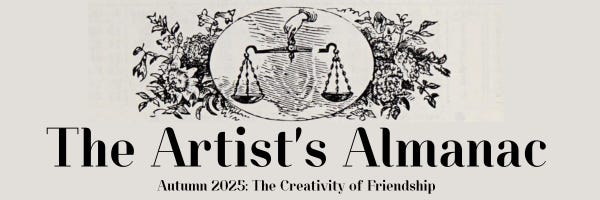
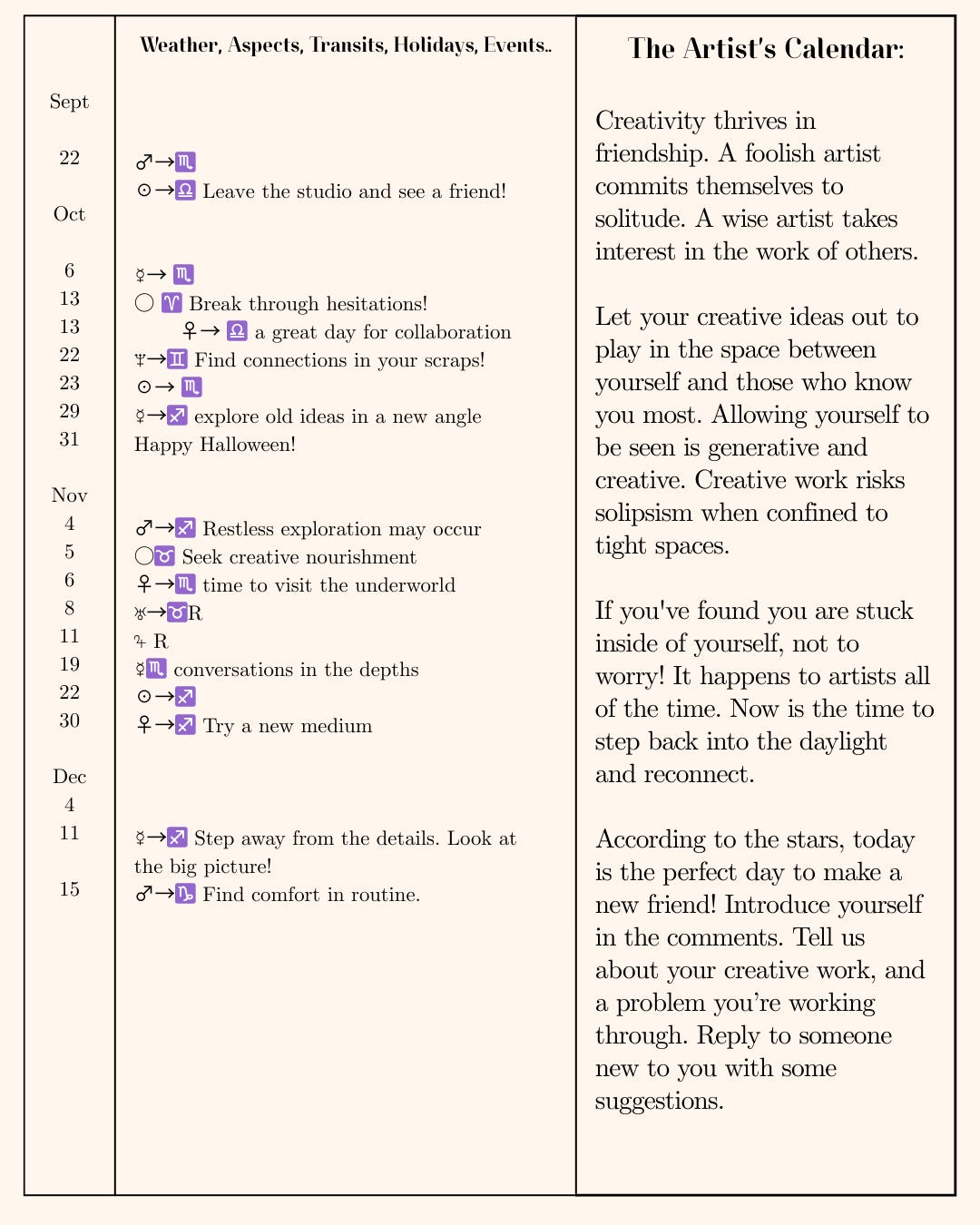
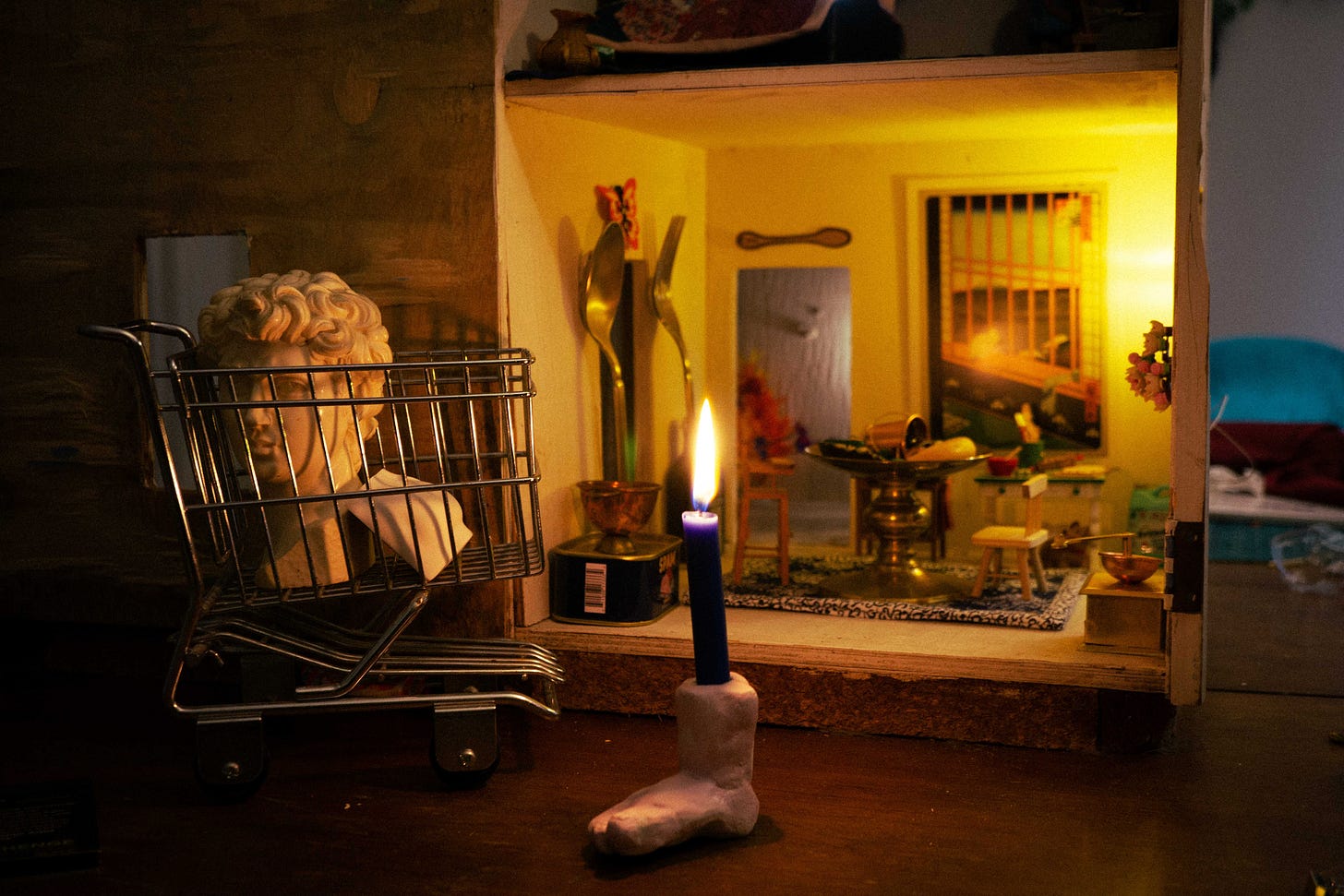

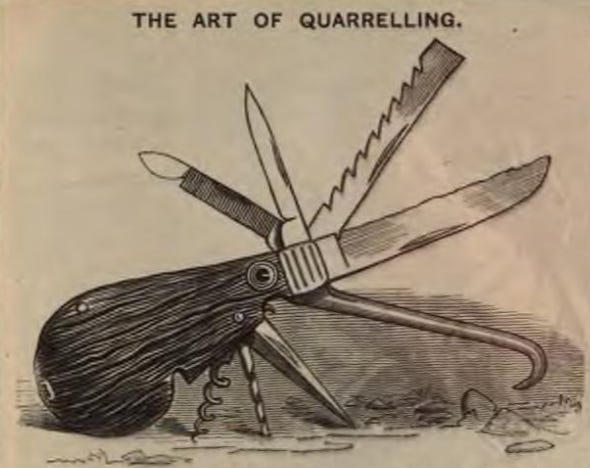

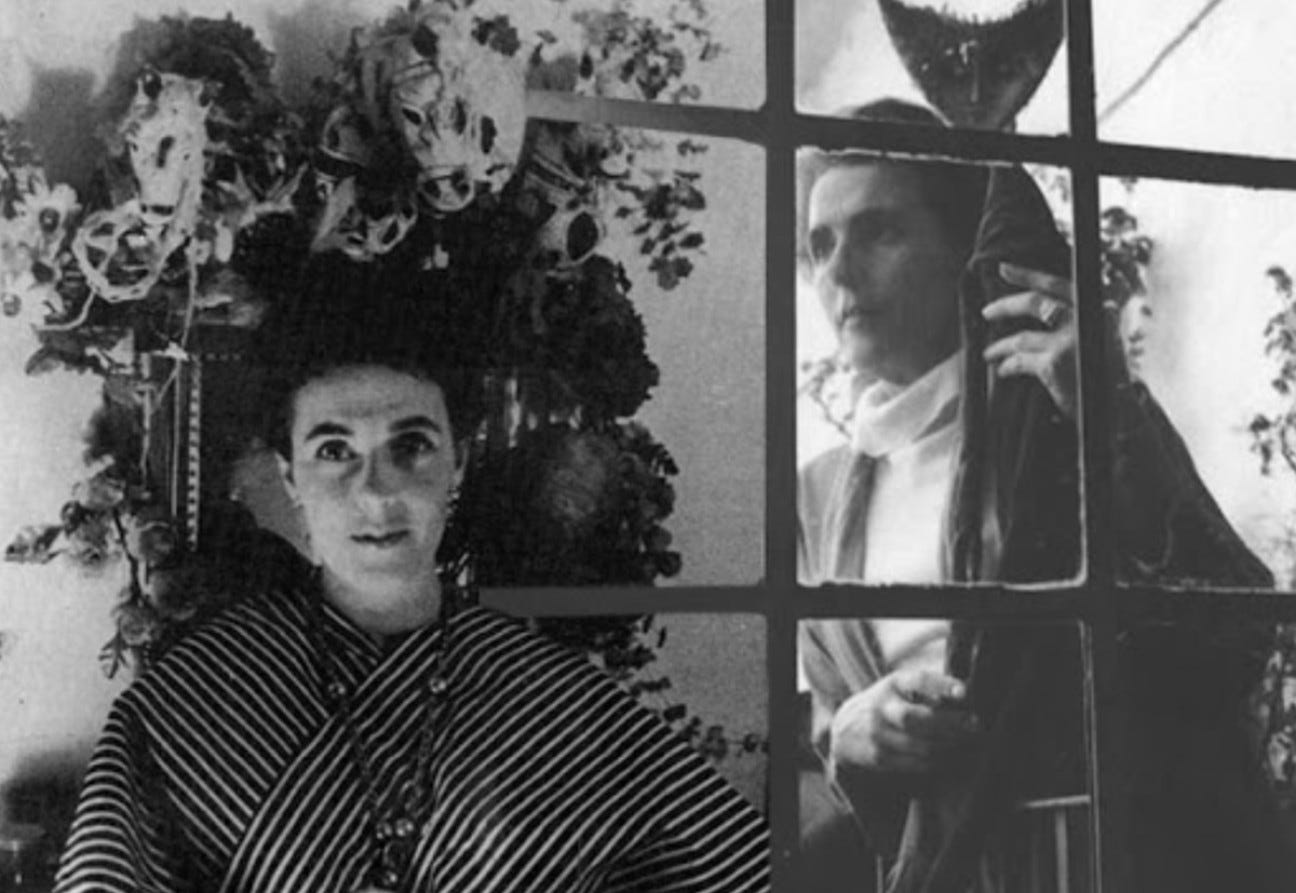
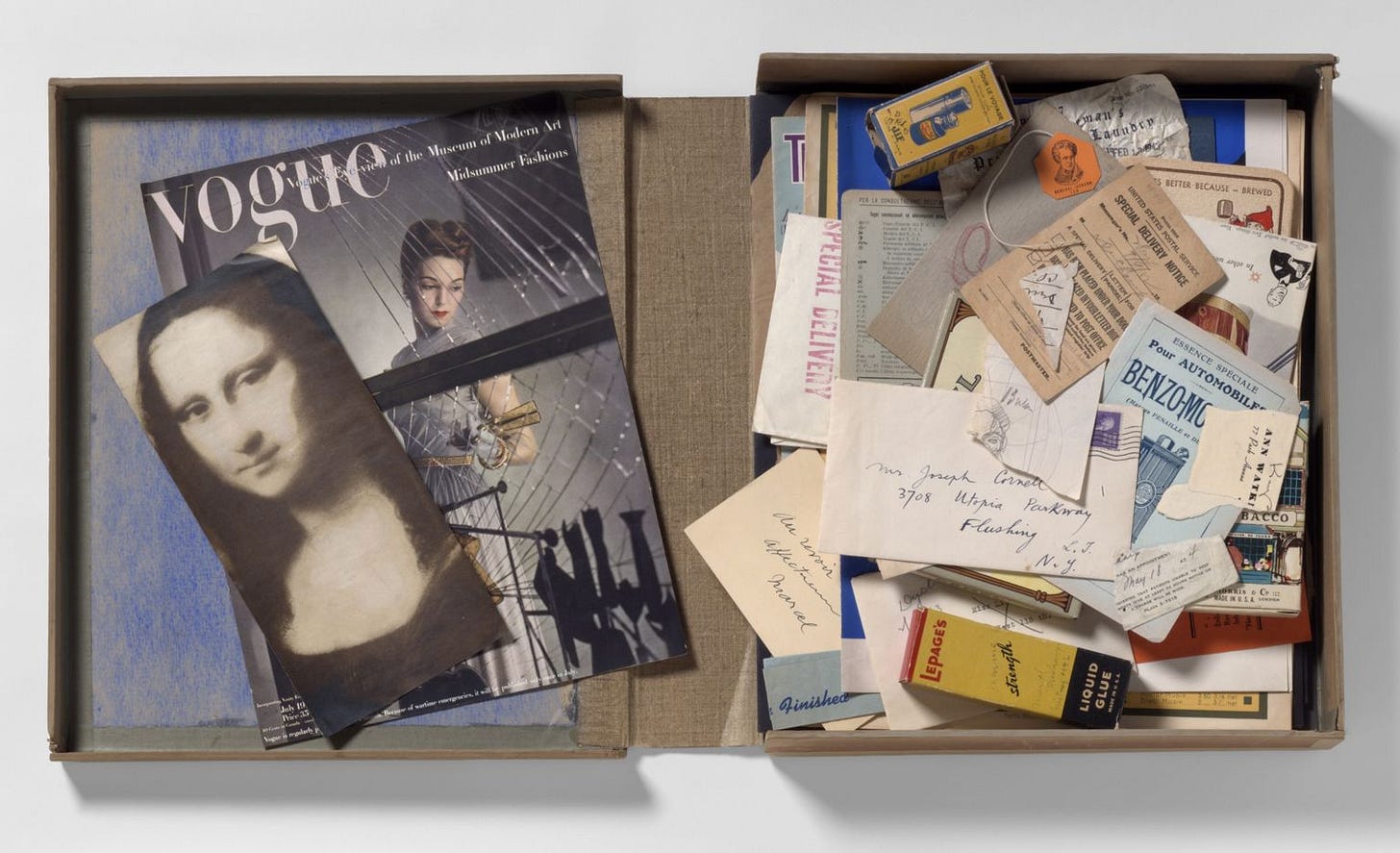

so helpful! I'm sharing this with a friend who has been struggling with creative isolation while working on a second draft of a novel.
your inner child party sounds delightful. i’ve wanted to throw a sensory friendly party where one room is dimly lit, with cool galaxy sky, cozy cushion corners etc… and another room that’s more dynamic and energizing with dance floor and music. i want to show the spectrum of senses for neurodivergent folks and welcome in all as valid. but i also LOVE this concept of creative imagination play for adults. omg. you have great ideas.